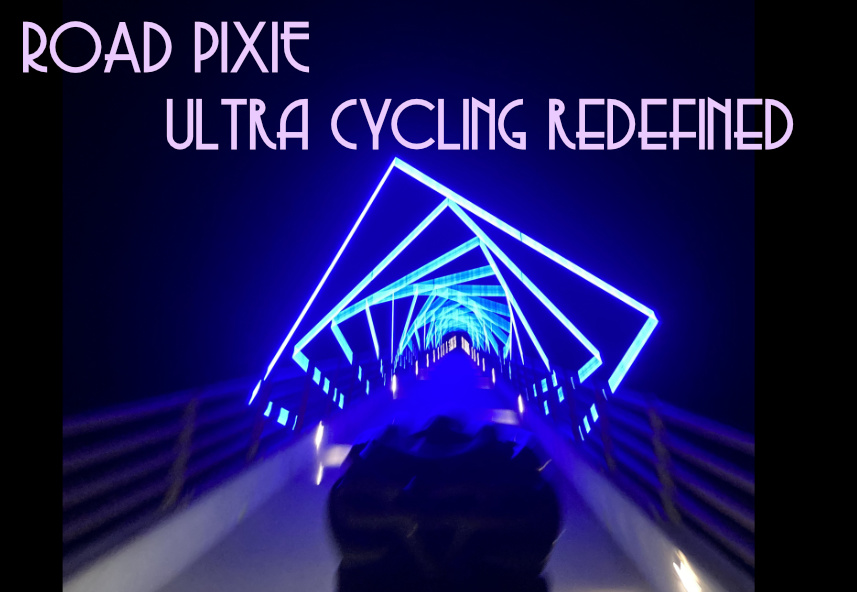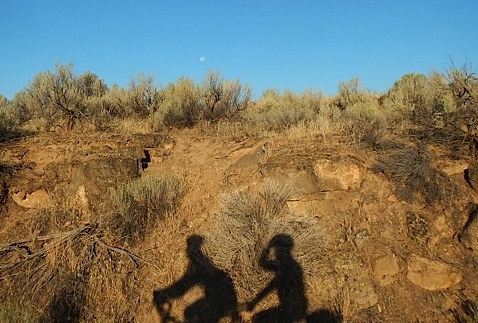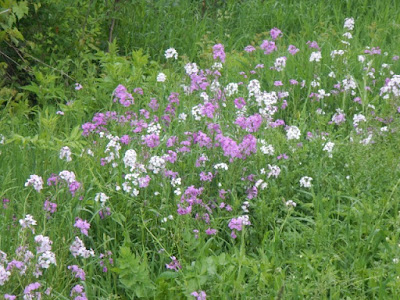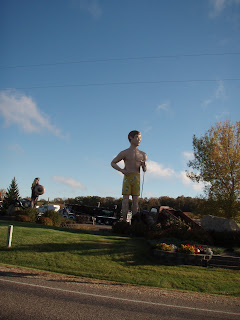I first experienced severe low blood sugar at the tender age of 13 years old. I was at band camp in Cincinnati and after an afternoon of marching around with a saxophone on a hot day, I recall a sudden sickening feeling in the pit of my stomach. That was followed quickly by a short view of the ground approaching and then a bunch of paramedics. One month and glucose tolerance test later, I was informed by an endocrinologist that I was likely growing at an uneven rate and that my pancreas was confused as a result or I was going to develop juvenile diabetes. In any case, a blood sugar level of 37 is just not a viable way to live. So I did a massive amount of research on the topic of blood sugar when other girls of my age group were likely reading Judith Krantz books. It's a topic that has never really gotten old, I still spend time keeping up to date on the latest biochemistry of metabolism.
Though the endocrinologist was correct and the worst part of the problem went away as I completed my teenage years, I've always had to be careful of my blood sugar. My marathon running uncle does have juvenile diabetes and I really have no desire to join him. Alas, it's a family of autoimmune diseases, but we do manage to get the job done as far as living goes. Though I, like every other cyclist on the planet, have my bonks, I am pretty good at feeling them approach and warding them off. Something sugary is always somewhere close by and I am chronically careful to keep my sugar tank full. Riding multi day events is all about recovery and my liver and blood glucose are key in that.
Over the years, especially riding the tandem, I've come to appreciate the various kinds of bonks. Sure we all experience the hammer-in-your-face-cannot-continue kind of bonk. But the most insidious kind of bonk is what I call the Silent Bonk. It happens most frequently in distance - the longer the distance the more insidious it is. Though I have only my own research to really base this off of, I might also admit to having a certain quantity of blood testing to augment my conclusions least in myself or perhaps you may have experienced it yourself. In a Silent Bonk, you feel fine, not ill or dizzy or any of the other tell tale signs. But you just can't seem to get going either. You aren't hungry or cramped or anything else and you still get through the ride thinking, "gee, that just wasn't my day". Every hill seems like a pain, sure you can climb them, but you make excuses like there being a headwind or overtraining or whatever. And unlike other kinds of bonks, I'm convinced that the Silent Bonk can go on for days.
If you go out and read about your metabolism, there are a few really important things to remember. First, your brain uses sugar only and it consumes about 20% of the sugar resources in your blood. If you don't have enough sugar in your blood, your brain doesn't work and you wind up feeling - you know it right away and that is the classic bonk. In a Silent Bonk, you manage to keep enough sugar in your system to keep your brain working, but you don't have quite enough to keep your muscles and other organs happy. If you are doing big sprints, this probably won't happen to you because you blast through all your reserves and the line is very far behind you when you start feeling it. But if you are cranking along as randonneurs so often are at a pretty aerobic pace, you might not notice that you are skirting closer to the line than you want to be.
Which brings us to the second thing that is important. In order for your body to change stored fat into sugar, there are metabolic processes that must happen first. Those processes require sugar to run, so you can't burn fat unless you have a supply of sugar. It's a chicken and egg thing and the body solves it by storing about 2,000 calories of sugar as glycogen in the muscles and the liver. That store is the "tank" that all endurance athletes must watch. It literally can take days to refill it completely. If you run out, you can't burn fat and you run out of energy until you consume more sugar. That is why doing a gel will cure the bonk, but if you do nothing else, you'll probably bonk again in an hour if you keep it up. Once the tank is empty, all you can really do is consume sugar as you burn it and that is very hard to do. The best thing to do is consume sugar to keep the tank full in the first place.
Non distance riders who bonk will do a gel, finish, and then the ride ends. They go home, eat dessert and a few days later, everything is back to normal. But what happens if you don't stop? For a day, two days, three days, four days, etc? What can happen is that the tank slowly drains and when you do stop to eat, you replace just enough to keep moving and keep your brain working. Let's face it, as a randonneur, it is almost impossible to keep up with the calories that you are burning, especially in multi day events.
So if I am on a 1200k and want to ride well for all 4 days, I have to safeguard the tank if I don't want to wind up pedaling at 8-10 miles an hour and have a Silent Bonk. Sure there is fatigue to consider, but a big part of doing multi day events is keeping your metabolism running well for all the days of the ride.
You can read all kinds of books by nutritionists and trainers. But most agree that while you are riding an endurance event about 60-80% of what you eat needs to be carbohydrates. Then some fat and protein. Protein is really interesting because it is actually the distant second for fuel. If your body is running out of carbs, it will start breaking down protein into amino acids and creating sugars that way. In fact, fat is last in the line of things to break down. And guess what the biggest source of protein in your body is: those muscles you spent all winter in the gym trying to build. That's the absolutely most cruel part of the Silent Bonk. As you are puzzling what is wrong, you are likely damaging your muscles so that next time you ride, you have less to work with. You get progressively weaker over a long period of time. Beware this effect, it's nasty!
Strangely enough, it happened to me early in my ultra days because I was trying to be careful of my blood sugar in the first place. As a person who had been lectured on how evil it was to have a blood sugar spike and crash (and who had them with alarming results), I mistakenly assumed that all sugar always caused a bunch of insulin to be released. I avoided ever eating sugar while riding. I liked to eat nuts - great source of fat, lousy source of continuous energy. Sure I never had a spike, I just had a continuously downward trend. To make matters worse, when I wasn't riding, I then had a sweet tooth to battle. And I got progressively slower over the summer.
What I finally figured out was that blood sugar spikes occurs when you consume sugar at rest, in other words, when you aren't using it. Insulin is the hormone that helps the body store sugar as fat (which is way more compact than in sugar form - look at the calorie counts on a tablespoon of oil and a tablespoon of sugar). If I am pedaling 250 miles, the chances that I will not have a need for the sugar I am consuming is much lower. Nonetheless, that is why more complex sugars or starches are preferable - they are available for a longer period of time - an hour or so. No one wants to be constantly chewing for 20 hours at a time. But if I don't eat enough carbs, my performance gets lackluster and over multi day events, I just start slowing down.
Figuring all this out was a big ah-ha moment for me. I have since watched it in 3 different people that I know. The first was a randonneur who, like me, was terrified of spiking his blood sugar. He was on my flèche team. After 3 hours, we were not running well as a team. Then the rest of us convinced him to start eating clif shots. His speed increased dramatically. We finished the flèche by buying him an entire bag of gummy bears at Walgreens. The second was training with IronK on our tandem for a hilly Cycle Oregon. Due to lung issues, she had limitations on how hard she could pedal hard and also wanted to lose weight. Alas, on a tandem, she would bonk on most hills. So we initiated the "gel at the bottom of the hill" rule. That allowed her to pedal like crazy coming up, but not overshoot or fall apart.
The last time I saw it was someone I'd ridden with many times. After 320 miles of what I could see was complete incredulity over lackluster riding, I pulled a packet of maple syrup out of my bag and handed it to them. In 5 minutes, little wings sprouted out their back and their pace increased by about 3-5 mph. Not really the kind of negative split one is looking for. We picked up over an hour on the clock in only 25 miles.
I encourage anyone reading this blog to not take my word for it. Google endurance and carbohydrate - beware articles by sports drink companies and read things from nutritionists, trainers and the NIH. But here is my recipe for avoiding the Silent Bonk and any other bonk:
1. Don't ride too fast at the start! Your metabolism needs a few to get into the groove. It's the most important time to ride your own ride.
2. Eat a mixture of foods and drinks gradually and eat about 100-200 calories of carbohydrate an hour depending on how hard you are working (big honking climbs require more). 60% of what I eat is carbs, with protein and fat second and third. I eat more fat than protein while riding.
3. Avoid high fructose corn syrup. If you can drink it, by all means do so, but it upsets my stomach and I like juice and lemonade with real sugar better. Fresh fruit is sometimes available at mini marts - bananas aren't the only one either.
4. Keep the tank full - Don't quit eating just because it is dark or raining. This is still a big problem for me. I don't feel like eating on the bike when I'm paying more attention to other things.
5. Find what works for you and then find about 10 other things that work too. On a 1200k, you get bored easily. You don't want to quit eating just because you already at that same gel for 2 days. I use a powdered gel, maple syrup, honey, sugar packets, organic gumdrops and stars from Whole Foods, and several cookie recipes. I've also been known to eat a donut or two and Little Debbie Oatmeal Cream Pies, which have an appalling amount of calories in a tiny space. Many really go for chocolate milk, but lately I only do it if I find it made with whole milk with sugar.
6. Don't forget electrolytes - all of them. Everyone knows about salt and potassium. Don't forget calcium and magnesium.
7. Do the ride backwards. I try to ride on day 1 the way I think I will feel on day 4, then day 2 like day 3. The idea is that by day 4, I still have energy for a sprint to the finish! I avoid redlining while climbing or in a headwind.
8. Eat your biggest meal of a multi day event before you sleep at the sleep stop. Your digestive system can then avoid competing with your legs. If you eat a bigger meal at a control, back it off for half an hour to give your stomach a chance to empty. This really helped me avoid getting nauseous.
9. Accept the fact that to finish, you might have to eat a Twinkie. I know someone who would rather bonk and DNF than eat something they don't consider nutritious enough. Consequence, they bonk and DNF a lot.
Randonneuring is a great sport. But it also requires hours and hours of training. Getting to the start of something like a 600k requires commitment and dedication. Don't let nutrition be the foil and beware the Silent Bonk.
2872 Hits
0 Comments



